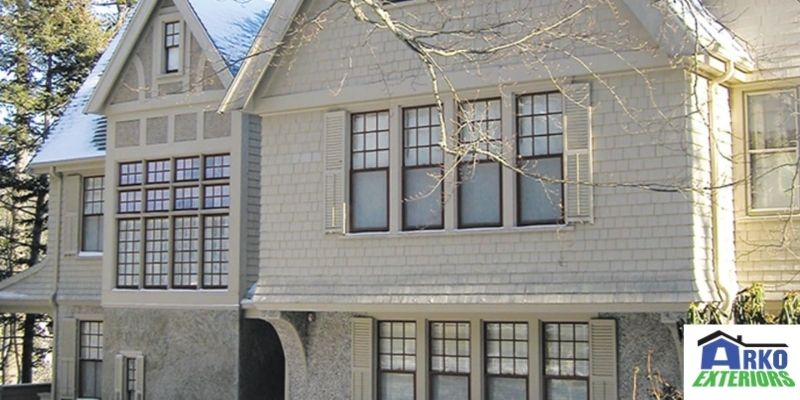Historic homes are beautiful and worth preserving. These homes are often constructed with long-lasting building materials that can withstand years of environmental factors. However, it is important to maintain your historic home to keep it looking beautiful while also ensuring your safety.
You may have the desire to renovate your historic home with new shingles. Even though you still want to maintain the old architectural structures and designs, it may be time to update. For this reason, you should choose the best roofing system that will match the structural design of your historic home.
When making your shingle choice, be sure that the roof is not too heavy since the house may be too old to bear the weight of a heavy roofing system.
You can choose the best shingles to enhance your historic home by following these ideas and picking proper roofing materials
Review The Documents Of The Home
If you have in your possession journals, clippings, newspapers, old photos and/or original blueprints of the house, you can review these materials for ideas on the color(s) and original roofing system of the old house.
Using the same roof and color of the house means you have preserved its old standard. For this, of course, you can give your hired roof contractor a detailed analysis of the roof or allow the contractor to see the old designs if they are still available.
Preserve Physical Evidence Of The Roof
Do not discard any materials from the old roof. Keep them, as they will be useful when you want to replace the shingles. You can preserve scraps and roofing hardware and show them to your roofing contractor, who will know firsthand what type of roofing system was used.
To get the best installation, try not to do it yourself, as you may not be able to replicate the home’s former roof. Rather, use an expert roof contractor who is familiar with installing such shingles.
Seek The Opinion Of Historical Organizations
Having an old home can mean that it is built in a historic district, where policies must be followed. It may be a bit challenging for you as you consider the restrictions of changing the roof of your historic home.
Some policies may include following the building codes in some areas, while others will allow you to make a few adjustments to suit the expectations for your old home.
Apply A Short-Term Patch
After your roofing inspector has checked for the damage that needs to be fixed, the contractor will then conduct extensive research to know everything about your roof. This may take a while as experts aim at giving you the best roofing solution.
The roofing inspector takes time to carry out the best research to give you the best result. The project might involve looking at the building requirement to resolve the complex situation of your old home in particular. If the home was passed on to you by someone else, the roofing contractor will need to review the documentation of the previous owner.
While you wait for this assessment to be done by your roofing contractor, there may be a need for you to opt for a temporary roof shingle patch to aid against further damage. Be sure that the patching is done properly by a professional.
The roofing contractor will reconstruct your roof after examining all the necessary documents related to the roof. Previous repairs, maintenance, the architectural plan of the home and other relevant details may be factors in supporting the success of replacing your roof.
Make Your Choices From The Following Advanced Roofing Systems
Clay Tile

In the past, roofing materials designed with clay were often used as they suited the colonial era. They were manufactured in different shapes such as convex, flat, round and even Spanish styles, especially in areas that were mostly influenced by the Spanish.
If your historic home was covered with this type of roof, it can be difficult to find the exact replacement as such designs and colors may be outdated. However, you can replace them with wood shingles or pick a modern roof tile. You may even stick to the general roof design even though the shingle is not exactly like the old one.
Wood Shingles
Just like clay tiles can be replaced by wood shingles in today’s era, wood shingles were also used instead of clay tiles during the colonial era. Wood shingles were used more often than clay tiles, and they progressed into the 19th century.
However, finding a replacement for wood shingles in today’s era can be challenging because the installation techniques have improved over the decades. Also, wood is produced in various types, and the production rate is now complicated. Therefore, you can replace your historic roof with modern roof tiles.
Metal Roofs

In the past, metal roofs were designed with copper and lead, and they were expensive for homeowners. Roofs produced by tin metals were often used around the 18th century. In today’s advanced era, metal roofs can be replaced with modernized metal roofs designed with aluminum, steel and tin.
Slate
Slate roofs were used more often in the 1700s and became prominent in America around 1785. Since slate roof shingles were preferred to a few other roofing systems due to their durability and quality, many homeowners chose this option.
You can easily replace this roof since slate is still available today. However, modern slates are made to be more long-lasting and colorful, and new designs are in abundance. Therefore, your historic home can be replaced with newly designed slate patterns to enhance the appearance of your antiquated home.
Conclusion
Several historic roofs are still in use by homeowners today, even though they have been improved by technology and creativity. These new roofs are more durable, colorful, shapely and can withstand harsh elements and natural disasters.
You can replace the roof of your historic home by choosing a suitable roof that matches your old design. All you need is a knowledgeable and experienced team, such as the roofing experts at Arko Exteriors in Minnesota, to ensure that the glory and style of your historic home are beautifully preserved.

